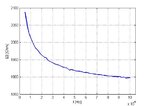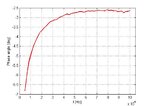north2012
Member level 3
Hello,
I would like to determine conductivity of water with complex impedance measurement based on AD5933. I do not have very good electro-chemical background so I am not sure how to connect impedance (magnitude, phase angle) with conductivity.
Any tutorials or practical experiences?
Thanks.
I would like to determine conductivity of water with complex impedance measurement based on AD5933. I do not have very good electro-chemical background so I am not sure how to connect impedance (magnitude, phase angle) with conductivity.
Any tutorials or practical experiences?
Thanks.

